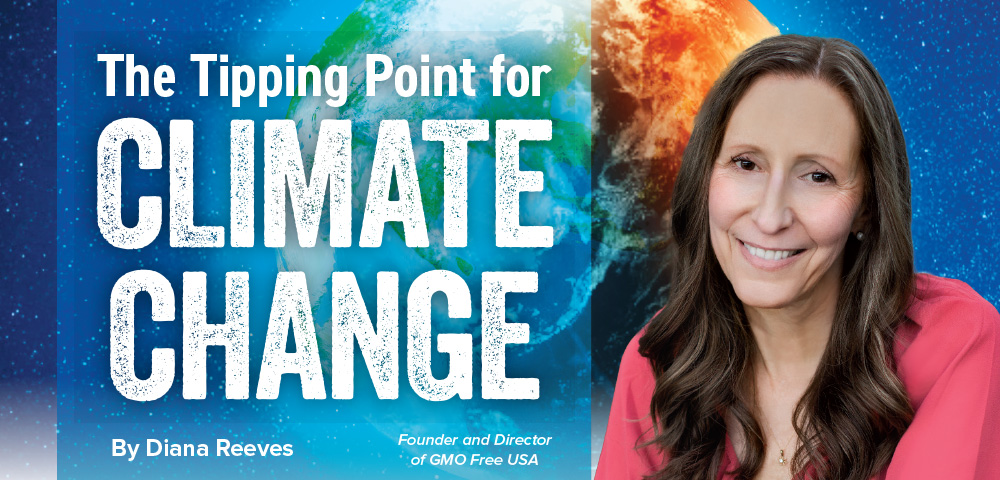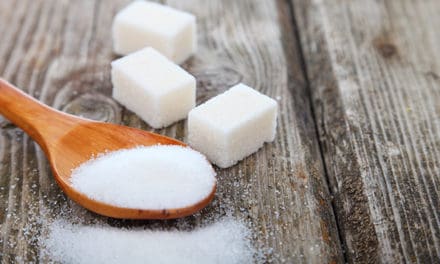
I guess you can say that the tipping point in my life came when I was spraying weeds in the yard with Roundup® while pregnant with my first child. As a mother-to-be, I carefully read the label stating that it was biodegradable and non-toxic. But then the nozzle clogged, and as I tried to unclog it, the weedkiller ultimately sprayed all over my skin. Of course, we have since learned that the chemical glyphosate, along with undisclosed adjuvants, increases absorption and magnifies the sprayer’s toxicity.
AT THAT MOMENT, I REMEMBER THINKING, IF ANYTHING HAPPENS TO THIS CHILD, I’M GOING TO KNOW WHY.
When Robby was born, everything seemed normal, but intuition gradually told me that something was wrong. While I was pregnant with my second child, Robby was diagnosed with a rare brain cancer. Two years later, after many surgeries and many rounds of radiation and chemotherapy, Robby passed away. Losing my child changed everything. I gave up my career in accounting and became a stay-at-home mom.
In the mid-1990s, Roundup popped back into my radar. Common sense told me that creating food sprayed with Roundup was a bad idea, despite the safety claims. I called the U.S. Environmental Protection Agency (EPA) and asked how much Roundup residue was in GMO corn. I got the runaround but eventually learned that the government wasn’t testing or monitoring GMO crops for Roundup residue. To this day, the US government does not include glyphosate, the most widely used herbicide in agriculture, in their annual fruit, vegetable, and grain pesticide residue testing program for GMO crops or any other food crop. Meanwhile, the Food and Drug Administration (FDA) said, there was “nothing to worry about,” and Monsanto claimed that Roundup was “as safe as table salt.” After three of us were diagnosed with celiac disease and the world watched what seemed to be a growing autoimmune epidemic, I wondered if there could be a connection.
While GMO foods were being introduced in North America, the European Union (EU) commissioned a scientist who supported genetic engineering to study their safety. When Árpád Pusztai published the study on a GMO potato created with the same built-in insecticide as GMO Bt-corn, the EU press courageously covered the story. The GMO potato caused significant health problems in rats. Europeans wisely decided they didn’t want GMO foods and were vocal about it, which led to strict, on-package GMO labeling. To this day, GMOs have been kept out of human food in the EU because of consumer rejection.
In the U.S., the study received no press coverage. Before we knew it, 80% of our packaged foods were made, in part, with genetic engineering. There were no GMO labels and no transparency.
So in 2012, I joined a local group working to get mandatory GMO labeling passed in Connecticut. We got so close, but the bill ultimately died. We learned Monsanto had threatened to sue Vermont if the state passed similar legislation. The day after the bill failed, I was ready to try a different approach. If we couldn’t get food labelled, we’d work to eliminate GMOs.
Shortly after that, GMO Free USA was born as a Facebook group. I started a petition against Kellogg’s®, asking them to remove GMOs, and started a consumer boycott as well.
By the end of the summer, we had over 5,000 members on Facebook, so we threw our support behind California’s Right-to-Know citizen ballot initiative to label GMOs. But in November, the measure was narrowly defeated after Monsanto, and other agrichemical and big food companies, such as Kellogg’s, spent over $45 million to trick Californians into voting against their own best interests.
In the spring of 2013, I flew to Battle Creek, Michigan, to deliver the petition to Kellogg’s with over 25,000 signatures and a pile of worrying, peer-reviewed studies. Every quarter following, we watched Kellogg’s sales decrease as our social media presence grew, reaching up to 12 million people weekly. We learned that public education is critical, and consumers who stop purchasing GMO foods ignite the most significant change.
The following year, as destiny would have it, I met a molecular geneticist at a conference and learned about a rat study linking Roundup weedkiller to Robby’s cancer. He told me that in his opinion, the adjuvants in the Roundup formula forced the weedkiller into my body and magnified its toxicity causing my son’s cancer. I was heartbroken.
In 2015, we accepted an invitation from musician Neil Young to join his tour for the Monsanto Years album. We jumped at the opportunity and spent months on the road, educating thousands across the country about clean and healthy food and agriculture. We heard heartbreaking stories from farmers forced to grow GMO corn because pollen drift from nearby GMO farms would contaminate non-GMO corn. Others told us about family members with cancer. In Ohio, we met a couple who lived near GMO fields and were both battling cancer.
We’ve come a long way since those early days. Unfortunately, both U.S. political parties have contributed to the problems with our food system along the way, like overturning mandatory, on-package GMO labeling, supporting agriculture dependent on large amounts of toxic chemicals, and passing policies and laws that allow food companies to buy cheap GMO ingredients and avoid transparency. To make matters worse, the federal GMO labeling law that took effect on January 1, 2022, does not require an on-package label, so GMOs are now called “Bioengineered” or “B.E.” foods, creating even more confusion in the marketplace.
Here are the facts:
As long as GMO crops receive massive government subsidies that aren’t available to organic farmers and the public is kept in the dark, cheap GMO foods will remain on the market despite declining sales.
To this day, Kellogg’s doesn’t offer a single non-GMO or organic option for children. They sell premium foods in Europe and give North American children chemical-laden cereals.
Meanwhile, they acquire independent organic food companies, such as Kashi®, to hedge losses against future obsolescence. The profits from those brands prop up the shrinking profits from the GMO junk!
Despite all the corporate efforts to control the food system, we the consumers have the power! There are signs of hope.
Over 80% of American households now purchase some organic food.
During the five-year period ending in 2019, organic farmland acreage increased by 50%.
Meanwhile, organic food sales climbed steadily, reaching a whopping $56.4 billion in 2020.
But less than 1% of total farm acreage in the U.S. is currently dedicated to organic farming. At the current pace, the majority of agriculture is not only making us sick, but is also contributing to planetary warming. We’re just not moving fast enough.
Agriculture contributes 31% of global anthropogenic greenhouse gasses (GHGs) according to the United Nations (UN) Food and Agriculture Organization (FAO). This contribution to climate disruption comes from conventional agriculture, not regenerative organic farming, which reduces GHG emissions. To mitigate the most severe effects of climate change, we must make regenerative organic agriculture the norm.
According to the U.S. Department of Agriculture (USDA), there are 900 million acres of farmland in the U.S. Over 99% of that is conventional agriculture, of which 20% is GMO commodity crops. Approximately 40% is used for conventional livestock production (meat, dairy, and eggs), and 99% of the livestock is raised in concentrated animal feeding operations (CAFOs). CAFO cows are fed a grain-based diet (typically GMO corn and GMO soy) causing them to expel massive amounts of methane, a potent GHG. CAFOs also cause ground-level pollution of the soil, water, and air, threatening public health and all living things.
Chemical-dependent industrial agriculture is killing the planet and making us sick. On so many levels, our conventional, GMO food system has driven us to a tipping point for climate change.
Every food dollar we spend is a vote for the kind of world we want to live in. Just imagine if millions of disgruntled consumers stopped buying Kellogg’s chemical-laden cereals and, instead, emailed to demand that they stop selling GMO products and shift to organic. GMO Free USA makes it easy; with the emails we send out and on our social media, you are a few clicks away from making your voice heard. Join us on Instagram @gmofreeusa_official and at fb.com/gmofreeusa on Facebook.
Chronic disease and premature death because of our broken food system are preventable. We can educate ourselves and our children to make better food choices.
We can grow food, support local organic farmers who help regenerate the soil, reduce meat consumption, and buy only pasture-raised organic meats – all of which will help reduce global warming.
Every single purchase matters. We have become a society with a problem of overconsumption.
Stop buying plastics and single- use items.
Read labels and support the companies that care about the food you feed your family and are good stewards of the Earth.
Everyone is busy, but science tells us we are at the tipping point. If we do nothing, we will forever ruin the Earth. For your health, the health of your children, our planet, and future generations, we must act now.
As we’ve seen many times in history, when enough people speak out to hold governments and corporations accountable, change happens. Together, we are stronger.
For more information or to get involved, visit gmofreeusa.org












